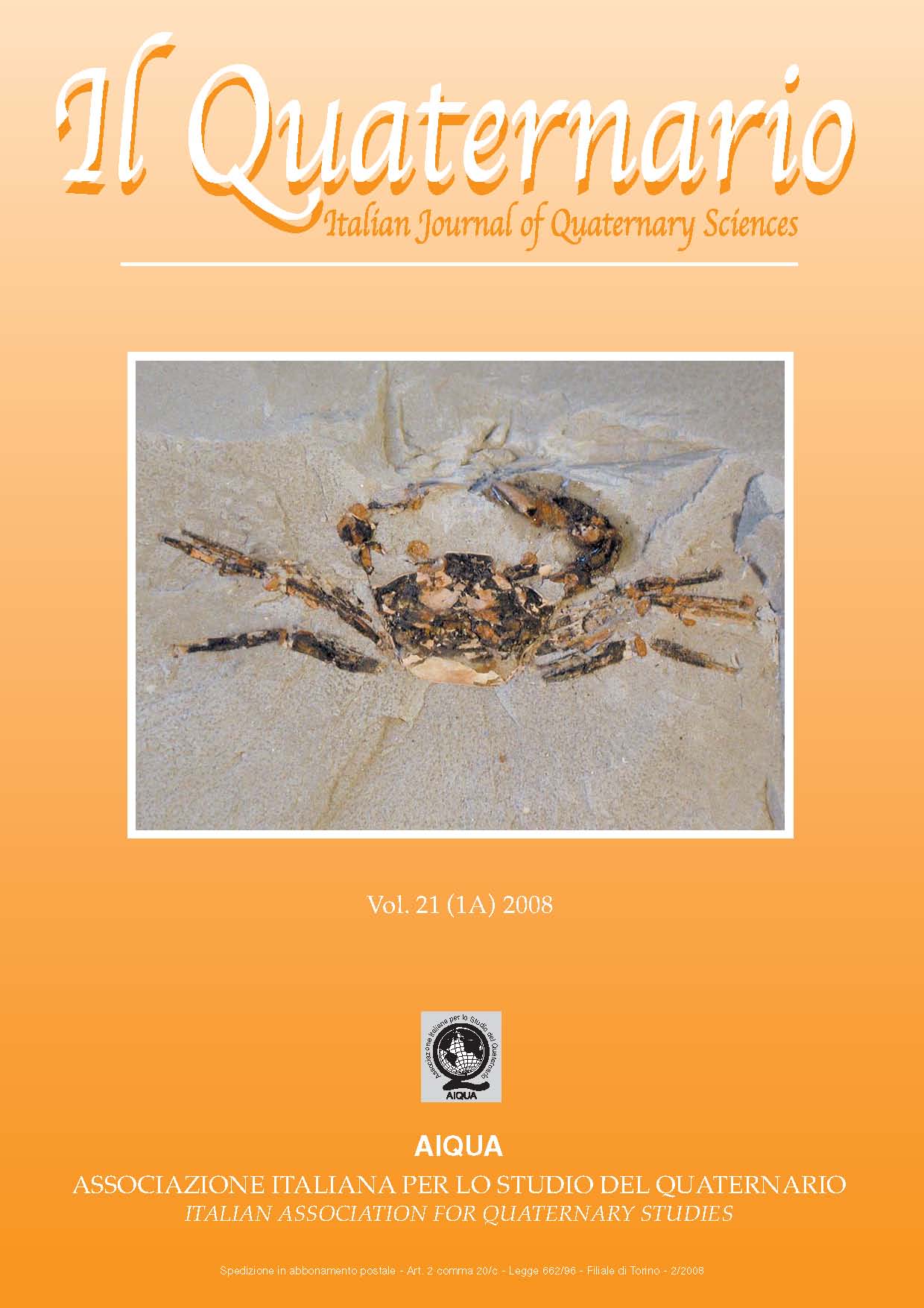PROPOSTA DI GEOSITI NEL QUADRO DI UNA NUOVA CARTOGRAFIA GEOLOGICA DEI CAMPI FLEGREI
Main Article Content
Abstract
L. Lirer, P. Petrosino & V. Armiero, A proposal of some geosites in the framework of a new geological map of Campi
Flegrei.
With the aim of drawing a new geological map in scale 1:10.000, the detailed geological survey of a large area of Campi Flegrei, from
Procida up to the Sebeto valley, was carried out in the last years. In this area we highlighted some geological sites that can be considered potential geosites due to rarity, scientific, educational and historical value. Particularly, we pointed out: the Breccia-Piperno
Formation, cropping out in the Soccavo-Pianura area, which represents one of the most ancient products of the phlegrean history; the
Solfatara, for centuries utilized as a mine, today is one of the principal monitoring center of Campi Flegrei and with its vapours testifies
the phlegrean activity; the Monte di Cuma, seat of the first Greek colony in Italy and rich of Greek-Roman archaeological remains; the
Averno lake, which in Roman age was an inner sea connected to Cuma by the Viadotto of Cocceio; the Monte Nuovo, a testimony of
the only historical eruption of Campi Flegrei, occurred in 1538, which completely modified the geography of this area.
The authors believe that these geosites, thanks to their singular geological and historical-cultural value, satisfy all the requirements
necessary to form, within the Regional Park of Campi Flegrei, the first volcanological European park: the European Geopark of Campi
Flegrei.
The connection between the geosites is guaranteed by present roads and, where possible, by Roman tunnels caved in ancient times
for military aims.
Article Details
Section

This work is licensed under a Creative Commons Attribution-NonCommercial-NoDerivatives 4.0 International License.
The Author grants usage rights to others using an open license (Creative Commons or equivalent) allowing for immediate free access to the work and permitting any user to read, download, copy, distribute, print, search, or link to the full texts of articles, crawl them for indexing, pass them as data to software, or use them for any other lawful purpose.

